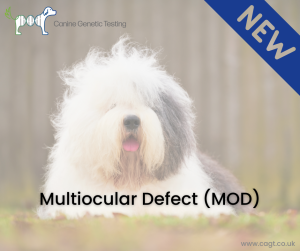 In 2017, as part of the Give a Dog a Genome project, we sequenced the genome of an Old English Sheepdog (OES) that had been diagnosed with hereditary cataracts under the BVA/KC/ISDS Eye Scheme. This was the start of a project that turned out to be a lot more complex than we initially thought it would be, and that was disrupted by both covid and our move from the Animal Health Trust to the University of Cambridge, but that we finally concluded at the end of last year.
In 2017, as part of the Give a Dog a Genome project, we sequenced the genome of an Old English Sheepdog (OES) that had been diagnosed with hereditary cataracts under the BVA/KC/ISDS Eye Scheme. This was the start of a project that turned out to be a lot more complex than we initially thought it would be, and that was disrupted by both covid and our move from the Animal Health Trust to the University of Cambridge, but that we finally concluded at the end of last year.
In collaboration with veterinary ophthalmologists and with the help of owners and breeders who submitted DNA from their dogs, the lead author, Dr Katherine Stanbury, analysed the genome sequence data alongside DNA from other OESs, and was able to identify the genetic variant responsible for cataracts in this breed. And moreover, as a result of this research, we now know that when Old English Sheepdogs develop cataracts, they are almost always accompanied by other ocular abnormalities that can include macrophthalmos (abnormally large eyes), retinal detachment, microphakia (abnormally small lenses) and lens colobomas (defective or missing lens zonules). For this reason, we now refer to this inherited disorder as multiocular defect (MOD).
We have published our findings in a peer-reviewed, open access journal (Stanbury et al., 2023) and a DNA test for the MOD mutation is available via CAGT.

